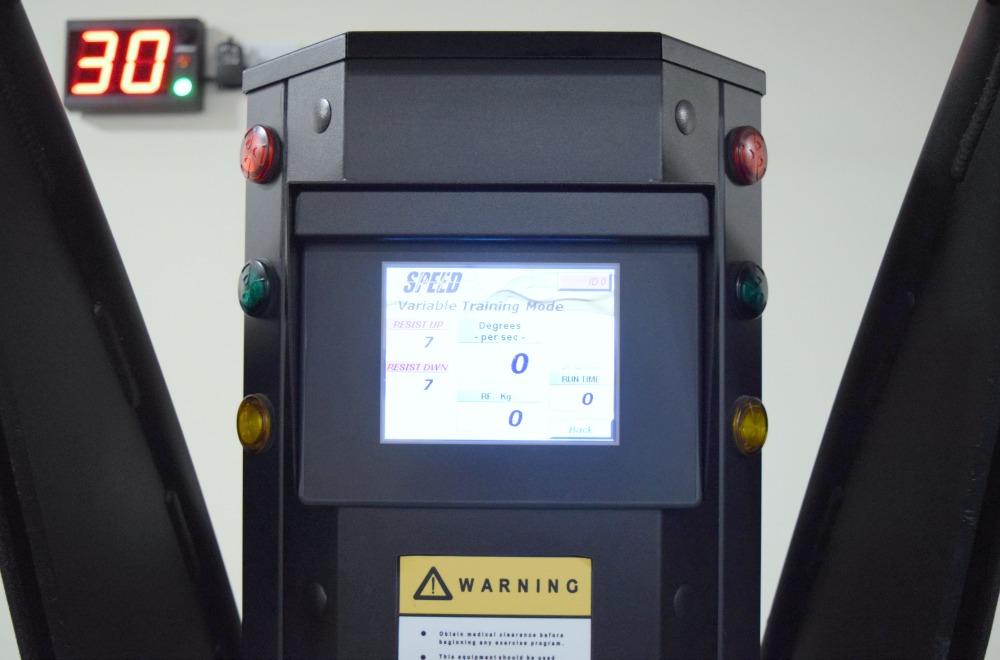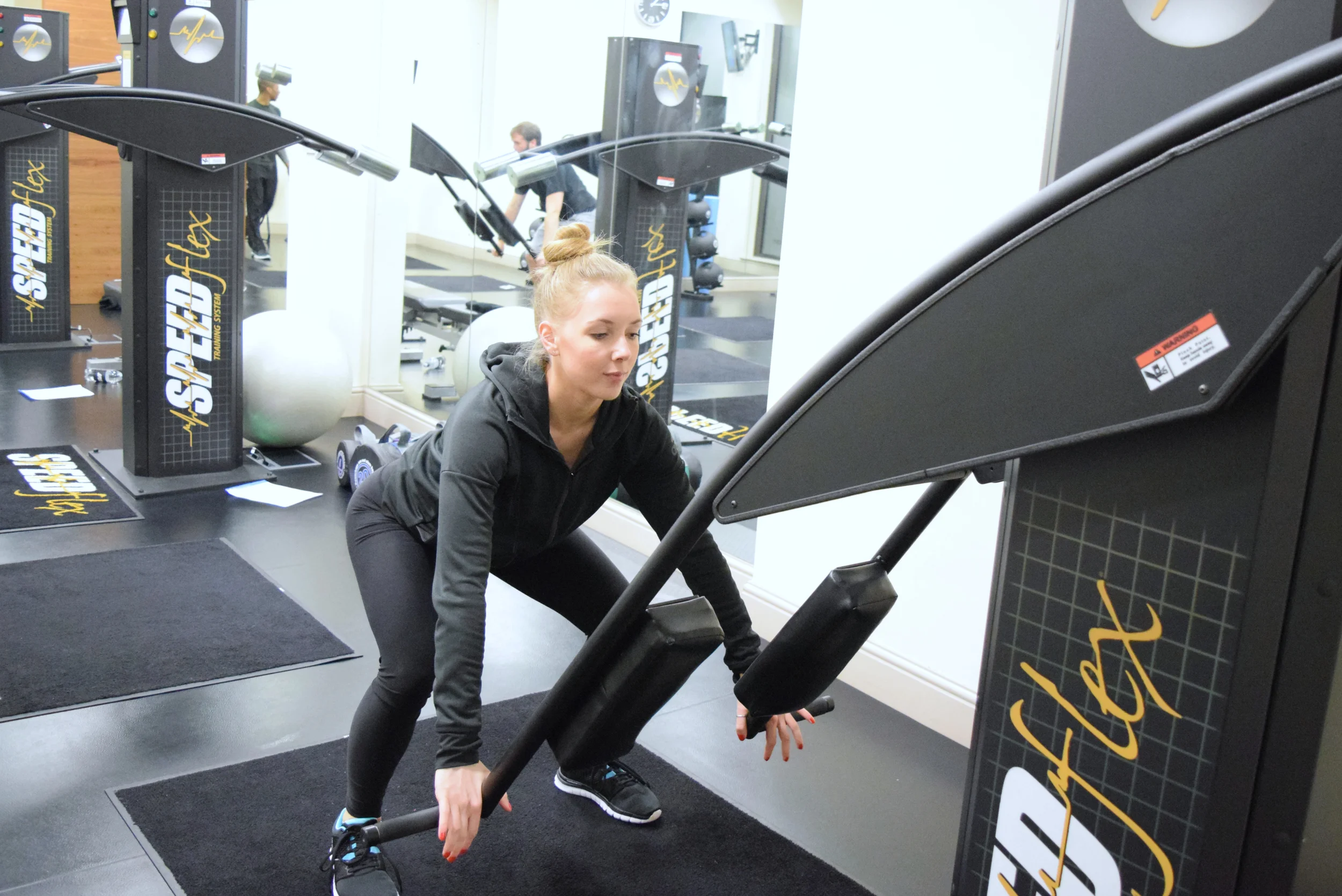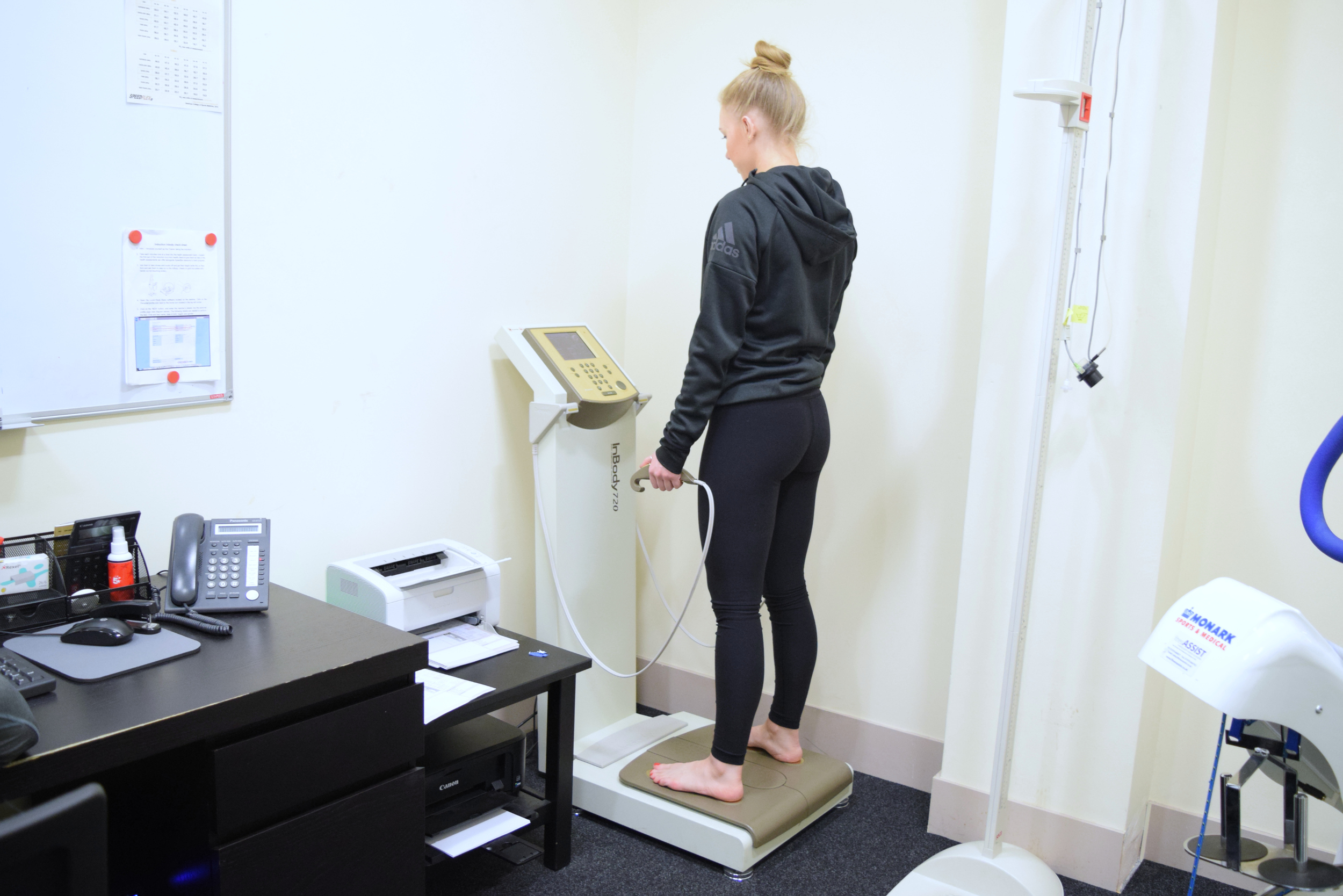Speedflex Review + The Need-To-Know On Eccentric Muscle Contractions
I love the concept of heart rate training (more on that coming soon!) and since I tried Orangetheory last year, I’ve been on the look out for more fitness studios that offer heart rate training.
One such place is Speedflex. However, while I was drawn to this studio by my fascination with heart rate monitoring, I found that Speedflex had some far more unique qualities to be discovered...
The Speedflex Concept
Speedflex classes are relatively small group training sessions that use a combination of Speedflex machines and traditional exercise forms, from kettlebell swings to burpees.
Speedflex machines were something that really interested me and are definitely the factor that makes these classes unique to any others.
The machines that you see in my pictures are fixed to the floor so that the column is static, and movement occurs using the free motion bar.
The machines can be used for a huge variety of exercises, either by using the handles to push and pull, or by positioning yourself under the bar with the pads on your shoulders to perform movements such as squats. Essentially, the machines are simple and allow for versatility.
Speedflex machines operate on a closed loop circuit, which means resistance is automatically adjusted in response to user-generated forces. As I also understand it, the resistance levels of the machines can be adjusted to some extent by the trainers.
Essentially, everybody from a professional athlete and an elderly exerciser can use the same machine because it responds to your own power and strength, rather than having to have weights loaded or unloaded from it. If you’re having trouble imagining what I mean by this, think of a rowing machine; the harder you row, the more ‘wind’ resistance you’re met with.
The way that your muscles contract using a Speedflex machine compared to other equipment like machine weights, free weights or your body weight, is very different.
Using hydraulics and electrical impulses, Speedflex machines use only concentrically based forces - only the forces placed on the machine by you - therefore eliminating all gravity based (eccentric) forces.
This has quite an impact on how working out with a Speedflex machine affects your muscles. So I’m going to go into a little more detail about how this works, and what the benefits (and possibly downsides) are for you...
Speedflex Machines + Your Muscles
To grasp how the Speedflex machines affect your muscles, you first need to understand the difference between types of muscle contraction. It’s pretty simple:
The lifting phrase of a movement, where the muscle shortens to work against a load (e.g. when you bend your arm in a bicep curl) is called the concentric phase.
The lowering phrase, where the muscle lengthens under tension to control the weight on the way back down (e.g. straightening your arm in a bicep curl, in order to control the dumbell as it descends with gravity) is called the eccentric phase.
The fact that Speedflex machines force you to use only concentric contractions means that you are working against load in all directions of a movement.
If you use a machine to overhead press, for example, you will then have to perform a lat pull down to return the machine to it’s original position.
To be super clear, this differs from performing an overhead press with a barbell. While the concentric phase (the lifting above your head) is the same, using a barbell you would have to then have an eccentric contraction when you control the bar back down to your start position, resisting gravity (unless you’d like to drop the weight on your head). With a Speedflex machine, you have to perform another concentric movement, actively pulling the machine to return to the start position.
This means that even the most basic exercises become more complex, as you use opposing muscle groups to apply force throughout the entirely of an exercise.
The machines also eliminate momentum, meaning that you have to work hard throughout your entire range of motion - that burn definitely didn’t go unnoticed by me!
Speedflex highlight a couple of benefits regarding the lack of the eccentric contractions:
- By eliminating eccentric forces, which traditionally need to be performed at a slow speed with great control, there is a reduced chance of injury.
- Because eccentric muscle contractions are mainly responsible for delayed onset muscle soreness (DOMS), you are unlikely to experience the same amount of soreness (they claim “little to no muscle soreness”) post-session.
While this might sound pretty appealing (although I personally don’t mind a little bit of soreness to show I worked hard!), you should know that eccentric loading is actually really beneficial for you. Here are a just a few reasons why, explained very briefly:
Eccentric contractions can help build strength. Your body can tolerate more weight eccentrically than it can concentrically. Think about squats, push ups, pull ups: you may be able to lower down with control, even if you don’t have the strength to push or pull yourself back to the starting position. Eccentric training is a great way to build up your strength; it’s a technique I’m using to help me master pull ups… one day…
You use less energy. While this reasoning may not appeal to you if you’re purely out to burn calories, it’s worth knowing that eccentric training will allow you to do more work, enabling your strength to improve.
For this reason, eccentric training can be useful in rehabilitation or exercise with the elderly as it allows them to train muscle groups and increase strength and resiliency with low-energy exercise.Eccentric contractions cause greater muscle damage. Again, this point might not sound super appealing, and obviously it goes against the way that Speedflex sell their service. However, the microscopic tears in the muscle fibers repair to become bigger and stronger, which is why bodybuilders often pay special attention to their slow negative movements.
The Workouts
Speedflex offer a range of different sessions, some using only the Speedflex machines, others that have a particular focus such as core and abdominal exercises in Coreflex.
I tried the original Speedflex session. Like other Speedflex sessions, it was a total body workout.
For 45 minutes, we moved around the studio in a circuit-style class. Each circuit element was a combo of two exercises: one using the Speedflex machine, and one using free weights or your body weight. Exercises that we performed on the Speedflex machine included overhead press, bent over row, squats, clean and press, and step ups.
Heart Rate Monitoring at Speedflex
What initially drew me to Speedflex was the fact that they offer heart rate monitoring during your workout, using a MYZONE heart rate strap; something that fitness studios are increasingly making accessible.
As with Orangetheory, during the workout, monitors display everyone’s heart rate as a percentrage on the overhead screens. The percentage shows how hard you are working relative to your own maximum heart rate (dependent on age, gender and weight). The display also shows your calories burnt. If you’re interested, my displayed showed that I burnt exactly 500 calories during my time in the studio.
However, unlike Orangetheory, I found that I didn’t check the screen for my heart rate that often as I was moving far more quickly between exercises and was aware of how hard I had been pushing myself based on my extreme muscle fatigue! However, it was still great to know that the option to check my stats was there.
The trainers aim to get everyone working at 85-95% of their heart rate max during their working sets. While I didn’t notice them refer to each person’s heart rate during class, here’s what they said:
“We use heart rate training at Speedflex as a tool to monitor how hard you are working throughout each session as well as to provide added motivation for members to help them push themselves that bit further, when possible.”
Speedflex Prices
Anyone can book an induction at Speedflex free of charge. This also entitles you to a two week free trial.
Inductions are carried out in groups, with a number of sessions being held each week. Within the time slot, you are called individually into a room where some of your key stats are measured using an InBody720 body composition analyser. Once everyone has had this done, you head into the studio to get to grips with the Speedflex machines.
Following your two week trial, classes are £15 each on a pay as you go basis, with discounts available when buying classes in blocks. Monthly memberships start from £69 (unless you’re eligible for an emergency services discount).
Where To Find Speedflex
There are number of Speedflex studios in the UK (as well as one in Dubai and one in Texas, US, according to the website!). I visited Speedflex London, which is based in The City, a very short walk from Bank Underground Station.
My Verdict
I find it really fascinating how the Speedflex machines work - they are undoubtedly a really unique and valuable piece of equipment.
I also love mixing up my workouts when I get the chance, and I find that group fitness classes at boutique studios are one of the best ways for me to get some intense cardio sessions into my training. For this reason, heading down to the Speedflex studio was great!
However, I wouldn’t use Speedflex as my main workout method for my personal goals. I loved pushing myself through the session and would certainly go back again, but the type of resistance training that can be performed on a Speedflex machine can’t beat a traditional session with some free weights, which I love. It’s definitely a great supplement to weight training though and I’d recommend anyone give it a try!
I’d love to know your thoughts on Speedflex after reading this article. Or perhaps you’ve tried it yourself? Leave me a comment below or tweet me @theblondeethos to let me know!



